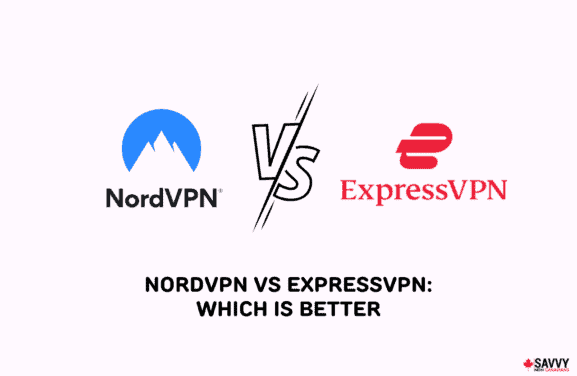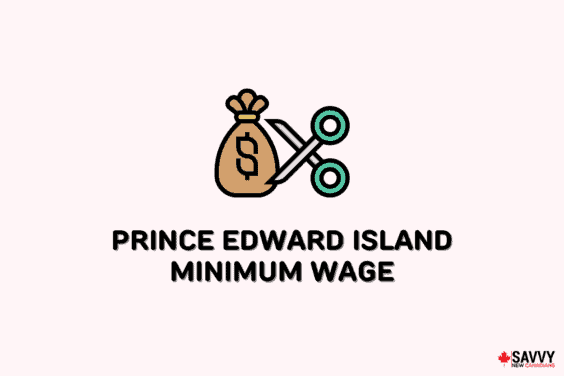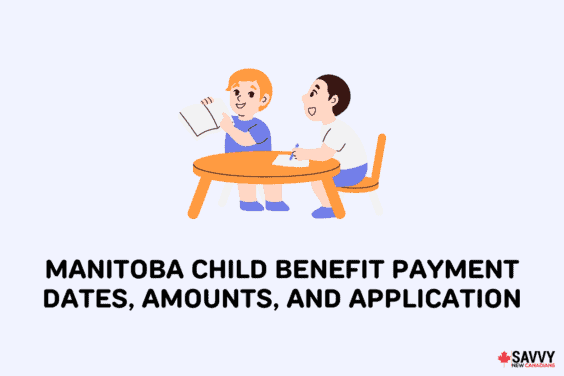In Canada, businesses collect sales tax on behalf of the government and remit it to the Canada Revenue Agency. Also known as a Value Added Tax (VAT) in some countries, sales taxes in Canada come in various formats.
There is the federal sales tax referred to as the Goods and Services Tax (GST).
Individual provinces may levy a provincial sales tax (PST) or retail sales tax, and some provinces combine their PST with the federal GST for a Harmonized Sales Tax (HST).
In Quebec, the provincial sales tax is called the Quebec Sales Tax (QST).
This article covers everything you must know about sales taxes in Canada, including how to calculate GST, HST, and PST and what is exempt.
Provincial Sales Tax Rates 2024
| Province | Sales Tax | GST | HST | PST | Total |
|---|---|---|---|---|---|
| Ontario | HST | – | 13% | – | 13% |
| British Columbia | GST + PST | 5% | – | 7% | 12% |
| Alberta | GST | 5% | – | – | 5% |
| Manitoba | GST + PST | 5% | – | 7% | 12% |
| Saskatchewan | GST + PST | 5% | – | 6% | 11% |
| Quebec | GST + QST | 5% | – | 9.975% (QST) | 14.975% |
| Nova Scotia | HST | – | 15% | – | 15% |
| New Brunswick | HST | – | 15% | – | 15% |
| Newfoundland and Labrador | HST | – | 15% | – | 15% |
| Prince Edward Island | HST | – | 15% | – | 15% |
| Northwest Territories | GST | 5% | – | – | 5% |
| Nunavut | GST | 5% | – | – | 5% |
| Yukon | GST | 5% | – | – | 5% |
Goods and Service Tax Canada
The GST is a sales tax levied on most goods and services purchased in Canada. It was first introduced in 1991 and is calculated at a rate of 5%.
Goods and services that are free from the GST are referred to as either being ‘exempt’ or “zero-rated”.
They include:
- Basic groceries such as milk, fish, meat, eggs, vegetables, and fruits
- Prescription drugs
- Medical devices, including hearing aid, artificial teeth, wheelchairs, eyeglasses, etc.
- Feminine hygiene products
- Most farm livestock, e.g. goats, cattle, sheep, poultry, and pigs
- Most medical and dental services
- Banking services
- Child care services
There are some others, and you can find a complete list here.
Some goods and services are exempt or zero-rated for GST but not PST.
Low-income Canadians receive a tax-free GST/HST credit or refund every quarter to offset all or part of the sales tax they have paid.
Related: Federal Income Tax Rate.
Sales Tax in Ontario
Ontario is one of the four provinces that levies a combined federal and provincial sales tax (aka Harmonized Sales Tax). The others are Prince Edward Island, Nova Scotia, New Brunswick, and Newfoundland and Labrador.
The HST in Ontario is 13%, of which 5% is the federal GST, and 8% is the provincial retail sales tax.
Point-of-sale rebates of the provincial portion of the HST are available for the following (this list is not exhaustive):
- Print newspapers
- Books
- Children’s clothing and footwear
- Children’s car seats and car booster seats
- Diapers
Related: Ontario Child Benefits.
Sales Tax in British Columbia
The provincial sales tax (PST) in B.C. is 7%. When combined with the 5% GST, you pay a total of 12% sales tax on most goods and services.
The following goods and services are exempt from the PST in B.C.:
- Basic groceries and prepared food
- Books, newspapers, and magazines
- Children’s clothing
- Prescription medications
- Bicycles
Get the complete list of exemptions here.
Some goods attract a higher PST, including liquor (10%), vapour products (20%), and vehicles (7% – 20%).
Related: B.C. Income Tax Rates.
Sales Tax in Alberta
Alberta is the only province without a provincial sales tax.
Combined with its low personal income tax rates, Albertans continue to pay one of the lowest taxes overall in Canada.
A 5% GST is still applicable, though, and you also pay taxes on tobacco products as follows:
- Cigarettes: 27.5 cents per stick
- Loose tobacco: 41.25 cents per gram
- Cigars: 142% of the price or 27.5 cents minimum and $8.61 maximum
Related: Alberta Seniors’ Benefit.
Sales Tax in Manitoba
Manitoba’s PST is 7%. Combined with the federal GST, you pay 12% on most goods and services.
There was a plan to decrease the PST from 7% to 6% on July 1, 2020; however, this was deferred until further notice.
PST-exempt goods and services in Manitoba include:
- Agricultural feeds
- Ambulances
- Baby supplies, e.g. diapers, strollers, monitors, feeding bottles, etc.
- Animal fencing, when purchased for farm use
- Printed books
- Children’s clothing and footwear
- Child safety restraint systems
- Prescription drugs
- Electricity
- Food and beverages exempt under the GST
Here is a complete list from the Manitoba government.
Related: Manitoba Income Tax Brackets and Rates.
Saskatchewan Sales Tax
The PST in Saskatchewan is 6%. When combined with the federal 5% GST, you pay a total of 11% on most goods and services purchased in the province.
New home constructions qualify for a PST rebate of up to 42% of the PST paid on a newly constructed home.
This rebate applies when the homeowner takes possession between March 31, 2020, and April 1, 2023, and for homes costing less than $450,000.
Basic groceries, prescription drugs, and residential electricity are also exempt from PST.
Related: Saskatchewan Income Tax Rates.
Quebec Sales Tax
The Quebec Sales Tax is 9.975%. Combined with the GST, you pay 14.975% on most goods and services.
The QST is administered by Revenu Quebec.
Zero-rated supplies in Quebec include:
- Basic groceries
- Some prescription drugs and medical devices
- Feminine hygiene products
- Printed books that have an International Standard Book Number (ISBN)
Most health, educational, childcare, financial, and legal aid services are also exempt from the QST.
Nova Scotia Sales Tax
Nova Scotia charges a Harmonized Sales Tax rate of 15%. This includes a 5% federal sales tax and a 10% provincial sales tax.
The provincial sales tax is rebated for the following goods:
- Children’s clothing and footwear, costumes and sports equipment and excluded
- Diapers (excludes adult-sized diapers)
- Feminine hygiene products (excludes douches, sprays and deodorants, and feminine wipes)
- Books ( excludes magazines and newspapers)
Find out more details about HST tax credits and rebates in Nova Scotia here.
Related: Nova Scotia Tax Rates.
New Brunswick Sales Tax
The HST rate in New Brunswick is 15%, including a 5% federal sale tax and a 10% provincial sales tax.
The HST is administered by the CRA on behalf of the province. A refund of the provincial 10% tax is available for:
- Printed books, audiobooks, and scriptures
- Research and Development supplies and services used by a university
- Some specially equipped vehicles
Related: New Brunswick Tax Rates.
Newfoundland and Labrador Sales Tax
The sales tax in NL is based on the HST system and comprises a federal GST component (5%) and a 10% provincial sales tax.
Farm equipment and building materials for homes qualify for rebates (varies).
Related: NL Income Tax Rates.
Prince Edward Island Sales Tax
PEI also uses the HST sales tax system. The rate is 15%, including the federal 5% and a 10% provincial sales tax.
A point-of-sale rebate of the provincial component of the HST is available for:
- Heating oil
- Children’s clothing and footwear
- Books
Find out more about the exceptions here.
Related: PEI Income Tax Rates.
Territorial Sales Tax Rates
The territories of Nunavut, Yukon, and the Northwest Territories do not pay territorial sales taxes.
Only the 5% federal GST applies when you purchase goods and services in these regions.
How to Calculate Sales Taxes in Canada
If you are calculating only the GST (such as in Alberta, Yukon, Nunavut, and the Northwest Territories), you add 5% to the retail selling price.
For example, if a good is sold for $1,000, you pay $1,050 after GST is included. This is calculated as $1,000 + $50 (i.e. 5% of $1,000).
If you are paying the HST, such as 13% in Ontario, you add 13% on top of the retail selling price. For example, if your purchase costs $1,000, you pay $1,130.
If you are paying GST and PST, such as in Manitoba, where it is a combined 12%, you pay both sales taxes at the point-of-sale, and CRA remits the PST portion to the province.
For a $1,000 purchase in Manitoba, your total cost is $1,120.
Sales Taxes in Canada FAQ
The combined sales tax (HST) in Toronto is 13%, of which 5% is a federal tax and 8% is provincial.
The Value Added Tax in Canada is referred to as a Goods and Sales Tax on the federal level and is a rate of 5%. Many provinces also charge a provincial sales tax, either separately as a PST or as part of the combined Harmonized Sales Tax (HST).
If you sell products and services in Canada and your business is not exempt, you may be required to register for a GST/HST account and collect sales taxes. A small supplier is not required to collect GST.



